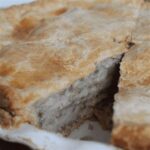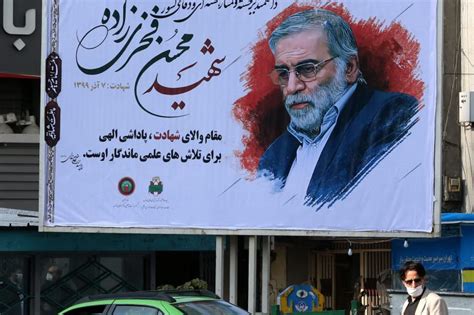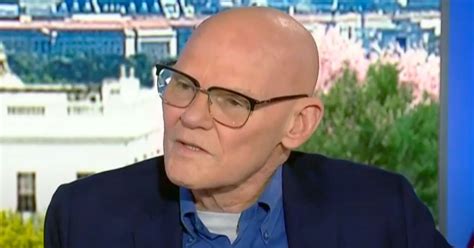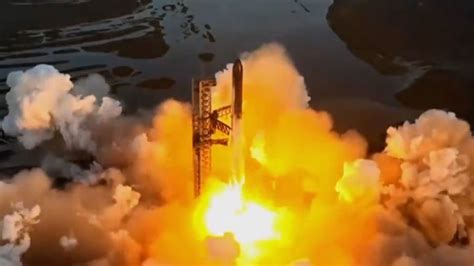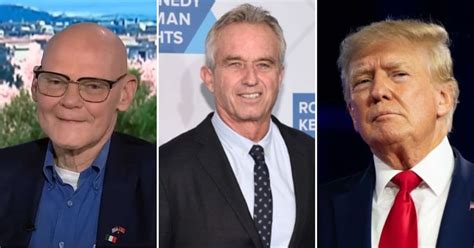
A report circulating in Iranian media alleges that a previously unknown Israeli-developed weapon was used in the assassinations of several Iranian nuclear scientists over the past few years. The claims, amplified by an article in the Kuwaiti newspaper Al-Jarida, suggest the weapon is sophisticated enough to target specific individuals with extreme precision, leaving minimal collateral damage and hindering forensic investigations. While Israeli officials have not commented directly on the allegations, the accusations have reignited tensions in the region and raised concerns about the ongoing covert conflict between Israel and Iran.
Allegations of a Novel Israeli Weapon in Iranian Scientist Assassinations Spark Regional Tensions
Tehran – Allegations are surfacing in Iranian media and subsequently amplified by regional outlets that a novel, highly sophisticated weapon, purportedly developed by Israel, was employed in the assassinations of several Iranian nuclear scientists in recent years. The claims, first prominently featured in the Kuwaiti newspaper Al-Jarida, have triggered renewed tensions between Iran and Israel and heightened scrutiny of the covert operations targeting Iran’s nuclear program.
The Al-Jarida report, citing unnamed sources, asserts that the weapon possesses unprecedented precision, enabling it to target specific individuals while minimizing or eliminating collateral damage. This precision purportedly extends to the weapon’s ability to evade standard forensic detection methods, complicating investigations and obscuring the true nature of the assassinations. The report does not offer specific technical details about the weapon, fueling speculation about its capabilities and underlying technology.
While Israeli officials have maintained a policy of strategic ambiguity, neither confirming nor denying involvement in the assassinations, the allegations have been met with heightened suspicion and condemnation from Iranian authorities. The purported existence of such a weapon intensifies concerns regarding Israel’s intelligence capabilities and its willingness to undertake aggressive measures to thwart Iran’s nuclear ambitions.
The assassinations, which have occurred sporadically over the past decade, have consistently targeted key figures in Iran’s nuclear program, including physicists, engineers, and senior officials. These incidents have disrupted Iran’s nuclear development timeline and prompted heightened security measures around its nuclear facilities and personnel. Iran has consistently blamed Israel and its allies for orchestrating these attacks, vowing retaliation.
The recent report adds another layer of complexity to the already fraught relationship between Iran and Israel. The alleged use of an advanced, untraceable weapon raises the specter of escalating covert warfare and the potential for further destabilization in the Middle East. Analysts suggest that the accusations could provide justification for Iran to accelerate its nuclear program or retaliate against Israeli interests abroad.
The international community has largely remained silent on the specific allegations, pending further investigation and verification. However, concerns have been expressed regarding the potential for escalation and the need for diplomatic solutions to address the underlying tensions. The accusations of a new Israeli weapon highlight the urgent need for transparency and accountability in the region, as well as a renewed focus on preventing further proliferation of advanced weaponry.
The implications of these allegations are far-reaching. If substantiated, they could represent a significant escalation in the ongoing shadow war between Israel and Iran, potentially leading to a more overt conflict. The report also underscores the increasing sophistication of clandestine operations and the challenges of maintaining stability in a region already beset by numerous geopolitical complexities.
Historical Context: The Assassinations of Iranian Nuclear Scientists
The alleged use of this new weapon is the latest chapter in a series of events that have significantly impacted Iran’s nuclear program. Over the past decade, several prominent Iranian nuclear scientists have been assassinated under mysterious circumstances.
-
Masoud Alimohammadi (2010): A physics professor at Tehran University, Alimohammadi was killed by a remote-controlled bomb attached to a motorcycle near his home. Iran accused Israel and the United States of involvement.
-
Majid Shahriari (2010): A nuclear engineer, Shahriari was killed in a similar attack involving a magnetic bomb attached to his car. Another scientist, Fereydoon Abbasi, was injured in a simultaneous attack.
-
Darioush Rezaeinejad (2011): An electrical engineer, Rezaeinejad was shot and killed in Tehran. While his exact role in the nuclear program was debated, Iranian media reported he was involved in high-voltage switches, a component used in uranium enrichment.
-
Mostafa Ahmadi Roshan (2012): A chemical engineer and director at the Natanz uranium enrichment facility, Ahmadi Roshan was killed by a magnetic bomb attached to his car.
These assassinations have had a chilling effect on Iran’s scientific community and have prompted heightened security measures around nuclear facilities and personnel. Iran has consistently blamed Israel and its allies for orchestrating these attacks, viewing them as part of a broader campaign to sabotage its nuclear program.
Israel’s Strategic Ambiguity
Israel has neither confirmed nor denied its involvement in the assassinations. This policy of strategic ambiguity is a well-established practice in Israeli national security, designed to deter adversaries while avoiding direct responsibility for controversial actions.
Israeli officials have, however, repeatedly expressed concerns about Iran’s nuclear ambitions, viewing them as an existential threat. Prime Minister Benjamin Netanyahu has consistently warned the international community about the dangers of a nuclear-armed Iran and has advocated for strong measures to prevent it from acquiring nuclear weapons.
Former Israeli officials have hinted at Israel’s involvement in covert operations against Iran’s nuclear program. In interviews, they have emphasized the importance of disrupting Iran’s nuclear development through various means, including sabotage, cyberattacks, and targeted killings.
The Al-Jarida Report: Key Claims and Analysis
The Al-Jarida report provides the most detailed account of the alleged new Israeli weapon. According to the report, the weapon is characterized by the following features:
-
Extreme Precision: The weapon is designed to target specific individuals with pinpoint accuracy, minimizing the risk of collateral damage. This precision is achieved through advanced targeting technology and sophisticated guidance systems.
-
Minimal Detectability: The weapon is designed to leave minimal forensic evidence, making it difficult to trace its origin or identify the perpetrators. This feature is attributed to the use of exotic materials and advanced manufacturing techniques.
-
Evading Countermeasures: The weapon is designed to evade standard security measures and countermeasures, making it difficult to intercept or neutralize. This feature is attributed to its advanced design and sophisticated electronic warfare capabilities.
The Al-Jarida report does not provide specific technical details about the weapon, fueling speculation about its capabilities and underlying technology. Some analysts suggest that the weapon could be based on directed energy technology, such as lasers or microwaves, while others speculate that it could involve advanced nanotechnologies or bio-weapons.
The lack of concrete evidence and the reliance on unnamed sources raise questions about the credibility of the Al-Jarida report. However, the report has been widely circulated in Iranian media and has been taken seriously by Iranian authorities.
Implications for Regional Security
The allegations of a new Israeli weapon have significant implications for regional security. If substantiated, they could represent a major escalation in the ongoing shadow war between Israel and Iran.
-
Escalation of Covert Warfare: The use of an advanced, untraceable weapon could encourage both sides to escalate their covert operations, leading to a cycle of attacks and counterattacks.
-
Increased Risk of Overt Conflict: The heightened tensions could increase the risk of a direct military confrontation between Israel and Iran, either through miscalculation or deliberate escalation.
-
Undermining Diplomatic Efforts: The allegations could undermine diplomatic efforts to resolve the underlying tensions and prevent Iran from acquiring nuclear weapons.
The international community has a critical role to play in de-escalating tensions and preventing further conflict. This includes urging both sides to exercise restraint, promoting dialogue and negotiation, and enforcing international norms against the proliferation of advanced weaponry.
Possible Motives and Iranian Response
The timing of the report and its widespread dissemination through Iranian media suggest a deliberate effort to shape public opinion and justify a potential response. Possible motives behind the release of the report include:
-
Justifying Retaliation: The report could be used to justify retaliatory actions against Israeli interests, either directly or through proxy groups.
-
Accelerating Nuclear Program: The report could be used to justify accelerating Iran’s nuclear program, arguing that it needs nuclear weapons to deter future attacks.
-
Gaining International Sympathy: The report could be used to gain international sympathy and support, portraying Iran as a victim of Israeli aggression.
Iranian officials have already condemned the alleged use of the new Israeli weapon, vowing to take appropriate measures to protect their scientists and nuclear facilities. The exact nature of Iran’s response remains to be seen, but it could involve a range of options, including cyberattacks, sabotage, or direct military action.
International Reaction and Diplomatic Efforts
The international community has largely remained silent on the specific allegations, pending further investigation and verification. However, concerns have been expressed regarding the potential for escalation and the need for diplomatic solutions to address the underlying tensions.
The United States, in particular, has called for restraint and has emphasized the importance of de-escalation. The Biden administration has expressed its commitment to preventing Iran from acquiring nuclear weapons through diplomacy, but has also warned that it is prepared to use all necessary means to achieve that goal.
The European Union has also called for dialogue and negotiation, urging both sides to avoid any actions that could further escalate tensions. The EU has played a key role in mediating past negotiations between Iran and the international community, and it is likely to continue its efforts to find a peaceful resolution to the conflict.
The Future of the Conflict
The future of the conflict between Israel and Iran remains uncertain. The allegations of a new Israeli weapon have added another layer of complexity to the already fraught relationship between the two countries.
The potential for escalation is high, and the risk of a direct military confrontation cannot be ruled out. The international community must act decisively to de-escalate tensions and prevent further conflict. This includes promoting dialogue and negotiation, enforcing international norms against the proliferation of advanced weaponry, and holding both sides accountable for their actions.
The ultimate goal should be to create a more stable and secure Middle East, where all countries can live in peace and prosperity. This requires addressing the underlying tensions that fuel the conflict between Israel and Iran, including the Iranian nuclear program, the Israeli-Palestinian conflict, and the broader regional power struggle.
Frequently Asked Questions (FAQ)
-
What is the main claim of the news report?
The main claim is that Israel has developed and used a novel, highly sophisticated weapon in the assassinations of Iranian nuclear scientists. This weapon is alleged to have extreme precision, minimal detectability, and the ability to evade countermeasures, making it difficult to trace its origin or identify the perpetrators.
-
Has Israel confirmed or denied its involvement in these assassinations?
Israel has maintained a policy of strategic ambiguity, neither confirming nor denying its involvement in the assassinations. This is a common practice in Israeli national security, designed to deter adversaries while avoiding direct responsibility for controversial actions.
-
What are the potential implications of these allegations for regional security?
If substantiated, the allegations could lead to an escalation of covert warfare between Israel and Iran, increasing the risk of a direct military confrontation. They could also undermine diplomatic efforts to resolve the underlying tensions and prevent Iran from acquiring nuclear weapons.
-
What has been the international reaction to these allegations?
The international community has largely remained silent on the specific allegations, pending further investigation and verification. However, concerns have been expressed regarding the potential for escalation and the need for diplomatic solutions to address the underlying tensions. The United States and the European Union have both called for restraint and dialogue.
-
What could be Iran’s possible response to these allegations?
Iran’s response could include retaliatory actions against Israeli interests, either directly or through proxy groups. It could also lead to an acceleration of Iran’s nuclear program, arguing that it needs nuclear weapons to deter future attacks. The allegations could also be used to gain international sympathy and support, portraying Iran as a victim of Israeli aggression.
Expanded Background Information and Analysis:
The allegations surrounding the use of a novel Israeli weapon in the assassination of Iranian nuclear scientists must be viewed within the broader context of the long-standing and multifaceted conflict between Israel and Iran. This conflict, which has largely played out in the shadows through covert operations, cyber warfare, and proxy conflicts, is rooted in fundamental ideological differences, geopolitical rivalries, and concerns about Iran’s nuclear ambitions.
The Ideological Divide:
At its core, the conflict is fueled by a fundamental ideological divide. Israel, a Jewish state with close ties to the West, sees Iran’s theocratic regime as a threat to its existence and the stability of the region. Iran, in turn, views Israel as an illegitimate occupying force and a tool of Western imperialism. This ideological clash has manifested in mutual accusations, inflammatory rhetoric, and support for opposing sides in regional conflicts.
Geopolitical Rivalries:
Beyond ideology, geopolitical rivalries also play a significant role. Both Israel and Iran seek to exert influence in the Middle East, and their interests often clash in countries like Syria, Lebanon, and Yemen. Iran has supported groups like Hezbollah and Hamas, which are considered terrorist organizations by Israel, while Israel has allegedly supported anti-government elements within Iran. This competition for regional dominance has fueled a proxy war, with each side seeking to undermine the other’s interests.
Concerns about Iran’s Nuclear Program:
Perhaps the most significant driver of the conflict is Iran’s nuclear program. Israel views Iran’s pursuit of nuclear technology as an existential threat, fearing that it could lead to the development of nuclear weapons that could be used against Israel. Iran maintains that its nuclear program is for peaceful purposes, such as energy production and medical research, but Israel and many Western countries remain skeptical. The possibility of a nuclear-armed Iran has prompted Israel to consider all options, including military action, to prevent it from acquiring nuclear weapons.
The Role of Covert Operations:
In this context, covert operations have become a key tool in the conflict between Israel and Iran. Both sides have engaged in a range of clandestine activities, including sabotage, cyberattacks, espionage, and targeted killings. These operations are designed to disrupt the other side’s activities, gather intelligence, and weaken its capabilities. The alleged use of a new Israeli weapon in the assassination of Iranian nuclear scientists would be consistent with this pattern of covert warfare.
Cyber Warfare:
Cyber warfare has emerged as another important dimension of the conflict. Israel and Iran have both developed sophisticated cyber capabilities, and they have used them to attack each other’s critical infrastructure, government networks, and financial systems. These cyberattacks can cause significant damage and disruption, and they can be difficult to attribute with certainty, making it challenging to deter or retaliate.
Proxy Conflicts:
The conflict between Israel and Iran has also played out through proxy conflicts in various parts of the Middle East. Iran has supported groups like Hezbollah in Lebanon and Hamas in Gaza, providing them with funding, training, and weapons. Israel, in turn, has provided support to anti-government elements in Syria and has conducted airstrikes against Iranian targets in Syria and Iraq. These proxy conflicts have exacerbated regional instability and have contributed to the ongoing humanitarian crisis in the region.
Impact of the Assassinations on Iranian Nuclear Program
The assassinations of Iranian nuclear scientists have had a tangible impact on Iran’s nuclear program, though the exact extent is difficult to quantify. The loss of key personnel has undoubtedly disrupted research and development, delayed project timelines, and created a climate of fear and uncertainty within the scientific community.
These assassinations have also forced Iran to invest heavily in security measures, diverting resources from other areas of its nuclear program. The heightened security has made it more difficult for international inspectors to monitor Iran’s nuclear activities, raising concerns about transparency and accountability.
The JCPOA and its Aftermath:
The 2015 Joint Comprehensive Plan of Action (JCPOA), also known as the Iran nuclear deal, was an attempt to resolve the conflict over Iran’s nuclear program through diplomacy. The JCPOA imposed restrictions on Iran’s nuclear activities in exchange for the lifting of economic sanctions. However, the JCPOA was deeply controversial, with Israel and some Western countries arguing that it did not go far enough to prevent Iran from acquiring nuclear weapons.
In 2018, the United States withdrew from the JCPOA under President Donald Trump and reimposed sanctions on Iran. This decision led to a further escalation of tensions between Israel and Iran, as Iran responded by gradually rolling back its commitments under the JCPOA. The current status of the JCPOA remains uncertain, with efforts underway to revive the agreement.
Future Scenarios:
The future of the conflict between Israel and Iran is highly uncertain, with several possible scenarios:
-
Escalation to Overt War: The conflict could escalate to an overt war, either through miscalculation or deliberate escalation. This could involve direct military strikes against each other’s territory, as well as cyberattacks and proxy conflicts.
-
Continued Covert Warfare: The conflict could continue to play out in the shadows, with both sides engaging in covert operations, cyber warfare, and proxy conflicts. This scenario would likely perpetuate regional instability and could lead to further escalations.
-
Diplomatic Resolution: A diplomatic resolution could be reached, either through a revival of the JCPOA or through a new agreement. This would require both sides to make concessions and to address each other’s concerns.
-
Nuclear Proliferation: Iran could decide to pursue nuclear weapons, either openly or secretly. This would be a highly destabilizing development that could trigger a regional arms race and increase the risk of nuclear conflict.
The outcome of the conflict will depend on a complex interplay of factors, including the policies of the United States and other major powers, the internal dynamics within Israel and Iran, and the broader regional context. The international community has a crucial role to play in de-escalating tensions and preventing further conflict.
In conclusion, the allegations surrounding the use of a novel Israeli weapon in the assassination of Iranian nuclear scientists are a symptom of the deep-seated and multifaceted conflict between Israel and Iran. This conflict is rooted in ideological differences, geopolitical rivalries, and concerns about Iran’s nuclear ambitions. The international community must act decisively to de-escalate tensions and prevent further conflict, which includes promoting dialogue and negotiation, enforcing international norms against the proliferation of advanced weaponry, and holding both sides accountable for their actions. Only through a comprehensive approach that addresses the underlying tensions can a lasting peace be achieved in the Middle East.



